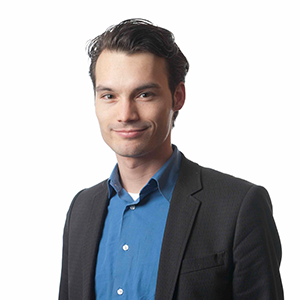Measuring, predicting and managing public transport disruptions
Disruptions to public transport caused by breakdowns or accidents happen on a daily basis. They can cause serious delays for travellers and significantly increase costs for transport companies. The additional congestion can also lead to an increase in the travel time experienced. In an effort to deal with disruptions, researcher Menno Yap is developing a method to reduce the impact they have on travellers. He will be awarded his doctorate at TU Delft for his work on this subject on Wednesday, 26 February.
Measuring, predicting and managing
The primary aim of his research is to improve methods for measuring, predicting and managing the impact of disruptions on urban public transport. Yap: “Everyone finds disruptions annoying and sees the importance of preventing or resolving them. But do we really know how travellers behave during a disruption or what a disruption to public transport costs travellers and society as a whole? With more data and knowledge, we will be able to devise solutions to reduce the impact.” Based on data from public transport chip cards and other sources, he is measuring the current impact of disruption. “With this information, we will be able to make predictions of what impact future disruptions will have and develop appropriate measures for limiting the consequences.”
Value of robustness
Yap is investigating the robustness of public transport: how resilient is the system? In his view, the question always revolves around the value of that robustness. His robustness tool will help government bodies and transport companies make decisions that are worthy of investment: “Every traveller wants to see the end to disruptions, but if train tickets suddenly rise in price because of an expensive robustness measure, the benefits will be subject to question.” Yap's tool provides a method that can calculate the costs of disruption to a specific public transport route and also how much you can reduce these costs by adopting a certain measure: the so-called robustness benefits. These benefits can then be offset against the cost of the measure in order to determine whether a measure is socially desirable.
Passenger experience
Yap always takes the passenger experience as his starting point: “When a train is running on time, that does not necessarily mean that all the travellers will reach their final destination on time. We look at things from the traveller’s perspective from door to door. It’s all about identifying the most vulnerable spots in the total public transport network.” In addition, several factors play a role in how a traveller experiences the journey. “If it’s so busy that there are no seats on the train, the journey time will seem longer and less pleasant.”
Science in practice
Yap has plenty of ambition: “I believe there is presently a gulf between practice and science. My aim is to forge a strong connection between my scientific research and practice. Ideally, the next step will be to be able to offer the ‘robustness tool’ to public transport companies.”
More information
Doctoral candidate Menno Yap: +44 7365798125, M.D.Yap@TUDelft.nl
TU Delft media relations officer Inge Snijder: +31 (0)15 27 87538, I.Snijder@tudelft.nl

Ir. Menno Yap
- +44 7365798125
- M.D.Yap@TUDelft.nl
-
Faculty of Civil Engineering and Geosciences
Building 23
Stevinweg 1
2628 CN DelftRoom: 4.31
